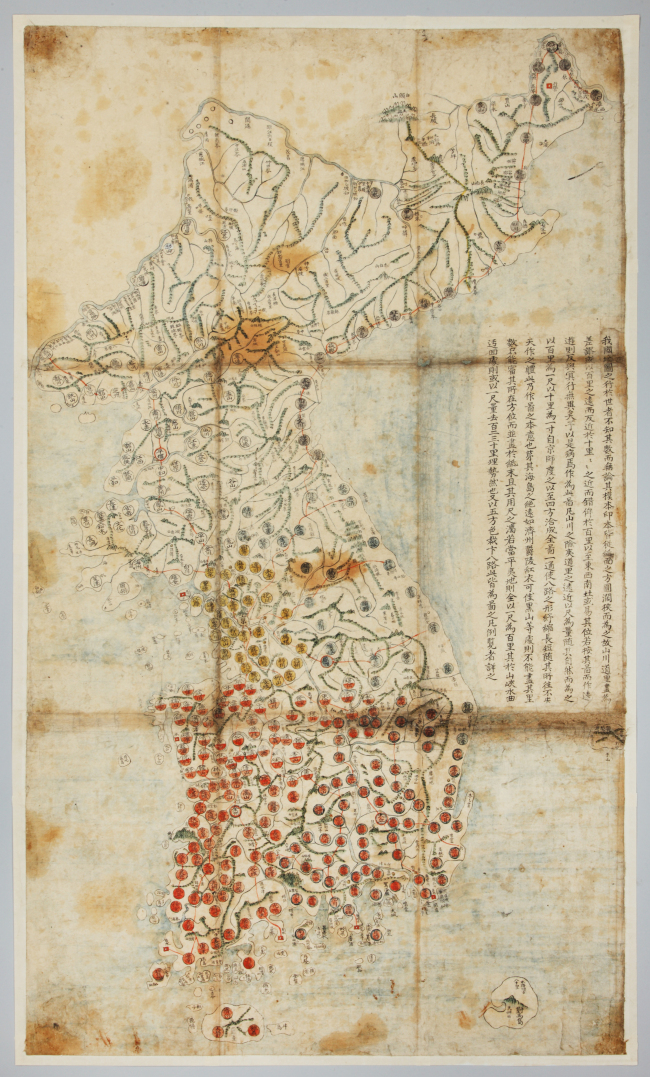Celebrating the 2015 Gyeonggi Folk Culture Year, a special exhibition sheds light on the history and culture of Gyeonggi Province.
The province surrounding Seoul constitutes 10 percent of the Korean Peninsula and its population tops among other provinces at 12 million, 24 percent of the nation’s total.
Historically, most of the areas that we now know as belonging to Seoul were part of Gyeonggi Province. Only the districts located within the four gates such as Jongno, Euljiro and Gwanghwamun were old Seoul. The old Gyeonggi provincial government office was located just outside the western gate of Seoul where the Red Cross Hospital stands now.
The province surrounding Seoul constitutes 10 percent of the Korean Peninsula and its population tops among other provinces at 12 million, 24 percent of the nation’s total.
Historically, most of the areas that we now know as belonging to Seoul were part of Gyeonggi Province. Only the districts located within the four gates such as Jongno, Euljiro and Gwanghwamun were old Seoul. The old Gyeonggi provincial government office was located just outside the western gate of Seoul where the Red Cross Hospital stands now.

“Gyeonggi was the place where different cultures came in and spread out,” said Kim Hyoung-jun, curator of the exhibition.
Gyeonggi was the supply route of major resources such as rice, salt and fuels from southern provinces to old Seoul. The wealth of resources in the region naturally led to forming big markets and contributed to the birth of valuable folk performances held in the markets.
Folk performances such as Anseong Namsadang Nori, registered as the UNESCO’s intangible cultural heritage of humanity and Yangju Byeolsandae Nori were performed to create upbeat mood for people gathered to vibrant markets in Anseong and Yangju.
Puppets and masks used for the performances are on display at the museum as a symbol of the once vibrant commercial boom in the region.

The exhibition divides Gyeonggi into four areas -- East, West, North and South -- characterized with different topographical features such as mountains, rivers, fields and the sea. It examines how these features shaped local cultures and products.
The western area of Gyeonggi, connected to the West Sea, functioned as an important route for ships transporting grains collected as taxes nationwide. The region was also a vital supplier of seafood and salt to old Seoul. Here, the ritual ceremony of Dondanggut was frequently held to wish for successful catch of fish, health and safety of fishermen.
The exhibition, coorganized by Gyeonggi Province and the National Folk Museum of Korea, runs through Oct. 26 at the National Folk Museum of Korea. For more information, visit www.nfm.go.kr.
By Lee Woo-young (wylee@heraldcorp.com)




![[Herald Interview] 'Amid aging population, Korea to invite more young professionals from overseas'](http://res.heraldm.com/phpwas/restmb_idxmake.php?idx=644&simg=/content/image/2024/04/24/20240424050844_0.jpg&u=20240424200058)












![[KH Explains] Korean shipbuilding stocks rally: Real growth or bubble?](http://res.heraldm.com/phpwas/restmb_idxmake.php?idx=652&simg=/content/image/2024/04/25/20240425050656_0.jpg&u=)

